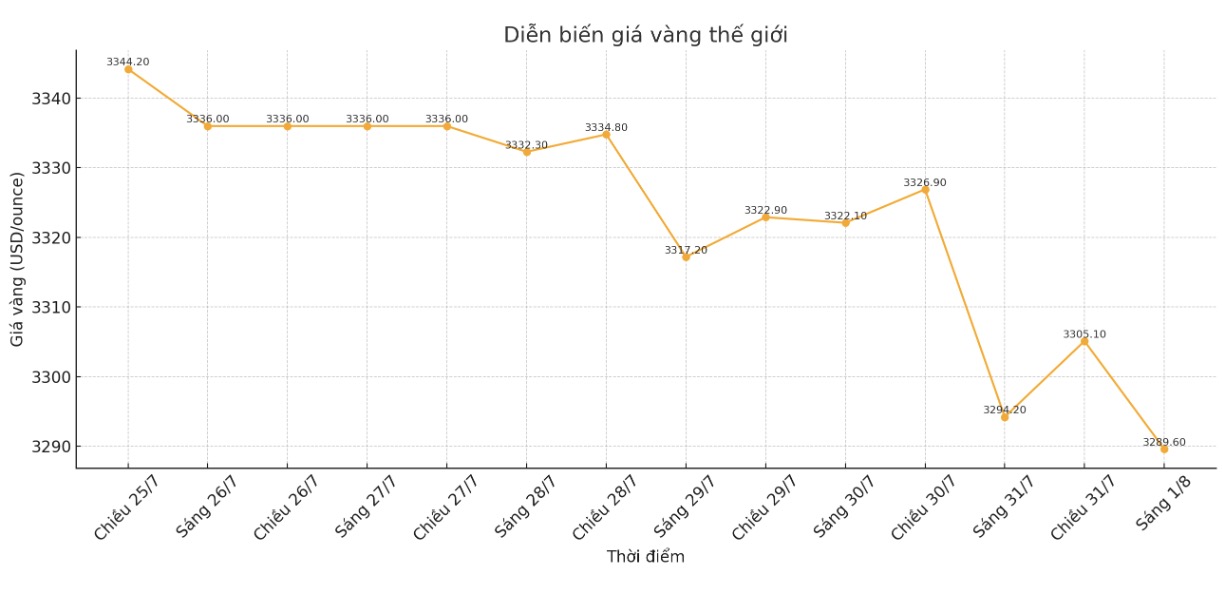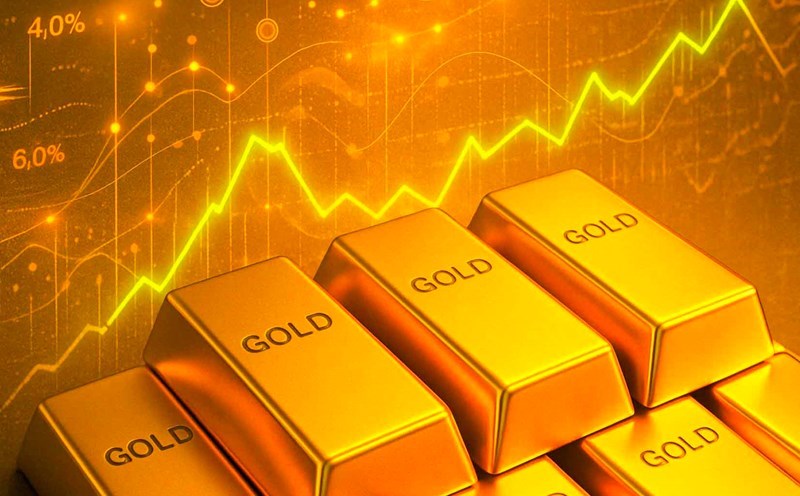According to the World Gold Council (WGC)'s Gold Demand trend report for the second quarter of 2025, total demand for gold (including non-concentrated investments - OTC) in the second quarter reached 1,249 tons, up 3% over the same period in 2024, despite gold prices setting an all-time record. This increase is mainly due to strong investment demand in gold ETFs.
Demand for gold bars and gold bars which often decline in high-priced environments, also recorded a strong recovery.
Analysts say rising economic uncertainty is driving safe-haven demand in the form of physical gold.
The two quarters have recorded the strongest first half of the year in gold bar and gold money investment since 2013 the report said.
In contrast to the general trend, demand for gold jewelry is differentiated. Although the volume of gold jewelry purchases has decreased, total spending has increased sharply. Global gold jewelry consumption in the second quarter decreased by 14%, down to 341 tons (the lowest level since the third quarter of 2020). However, in value, annual consumption increased by 21%, reaching 36 billion USD.

ETFs return to focus
Investment has once again become a major driver in the gold market. Total investment demand skyrocketed by 78% over the same period, reaching 477.2 tons in the second quarter. Western investors returned to gold ETFs, recording their strongest cash flow since 2020. Meanwhile, investment demand from China is still leading, increasing by 44% over the same period.
Factors that prompted gold investment in the first quarter continued to be present in the second quarter: fluctuating US trade policy, weak USD, geopolitical tensions, concerns about inflation and economic growth, along with record high gold prices analysts.
In the second quarter, gold ETFs attracted 170 tons of gold. The WGC believes there is still room for increased capital flows into ETFs, as well as decentralized investment, although the pace may slow down compared to the first half of the year.
Although safe-haven concerns are easing, gold is still an effective tool for portfolio diversification.
Gold investors are less affected by long-term bond yield fluctuations, and the high correlation between stocks the current bonds further strengthen the position of gold the report said.
The WGC forecasts that investment demand could increase further as the market expects the Fed to start cutting interest rates in September. This will reduce bond yields and the US dollar, creating a push for gold prices.
In addition to paper gold, global physical gold demand reached 370 tons, up 11% compared to last year.
Central banks reduce purchases but still maintain a positive trend
Central bank purchases continue to be a key pillar, although there are signs of slowing down in the second quarter of 2025. The total official purchase volume was 166 tons, down 21% compared to the second quarter of 2024 - the second consecutive quarter of decline.
However, the WGC believes this is not surprising due to record high gold prices. However, demand in the first 6 months of the year is still 41% higher than the long-term average.
We are still optimistic about the buying trend of central banks in 2025 and the coming years. Foreign exchange reserve growth or a slight decrease in gold prices could restart the buying cycle, experts said.
Gold is still highly appreciated by central banks for its ability to store value, be effective in the crisis and diversify its reserve portfolio.
Demand for gold in technology declines
The technology industry is still a small consumer segment, but is attracting attention thanks to the AI wave. However, in the second quarter, demand for gold in technology decreased by 2%, down to 78.6 tons.
The WGC believes that trade uncertainty such as tax barriers and export restrictions along with high gold prices has affected the manufacturing sector. However, demand for AI components remains strong, and exports of electronic devices recover after temporary trade agreements. However, trade difficulties are forecast to continue in the second half of 2025.
Recycled gold supply increases more slowly than price
Despite the sharp increase in prices, the supply of recycled gold has not responded accordingly. Total gold supply in the second quarter increased by 3%, reaching 1,248.8 tons, of which mining output reached 908.6 tons (up 1%).
The supply of recycled gold reached 347.2 tons, up 4% over the same period, considered a slight increase compared to the strong price increase (average gold price increased by 40% over the same period and 15% over the previous quarter).
The reaction from recycled supply is still slower than expected, despite sharp price increases experts assessed.











